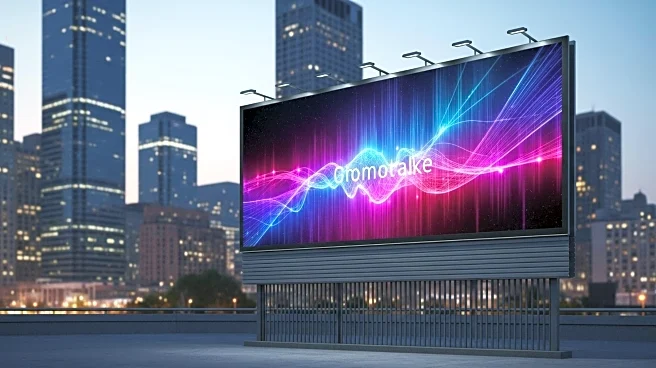What's Happening?
The Out of Home Advertising Association of America (OAAA), led by President and CEO Anna Bager, has reported significant growth in the out-of-home advertising industry, nearing the $10 billion mark. This
growth is attributed to the industry's ability to maintain a physical presence, which is increasingly valuable in a media environment where digital channels face challenges such as algorithm changes and disappearing cookies. The industry grew by 3% in the second quarter, with digital out-of-home advertising accounting for 36% of total spending. The OAAA highlights the industry's resilience against economic headwinds and its ability to reach audiences in physical spaces like streets and stations, as well as smaller screens in stores.
Why It's Important?
The growth of the out-of-home advertising industry is significant as it provides a stable advertising medium amidst the volatility faced by digital channels. This stability is crucial for advertisers seeking reliable ways to reach audiences without the unpredictability of digital platforms. The industry's expansion into digital formats and programmatic buying enhances its accessibility and measurement capabilities, attracting new categories such as pharma and tech. This growth reflects a shift in advertising strategies, emphasizing the importance of physical presence and real-world connections in an increasingly digital world.
What's Next?
The out-of-home advertising industry is expected to continue its growth trajectory, driven by upcoming cultural and sporting events such as the FIFA World Cup, Formula One, and the Super Bowl. These events offer opportunities for brands to anchor themselves in cultural conversations and reach audiences during communal moments. Additionally, the integration of AI and data analytics is set to further enhance the industry's targeting and measurement capabilities, providing advertisers with more precise tools to engage consumers.
Beyond the Headlines
The resurgence of out-of-home advertising highlights a broader trend towards valuing physical experiences and connections in marketing. As digital channels face challenges, the ability to engage audiences in real-world environments becomes increasingly important. This shift may lead to a reevaluation of advertising strategies, prioritizing formats that offer tangible interactions and cultural relevance.











